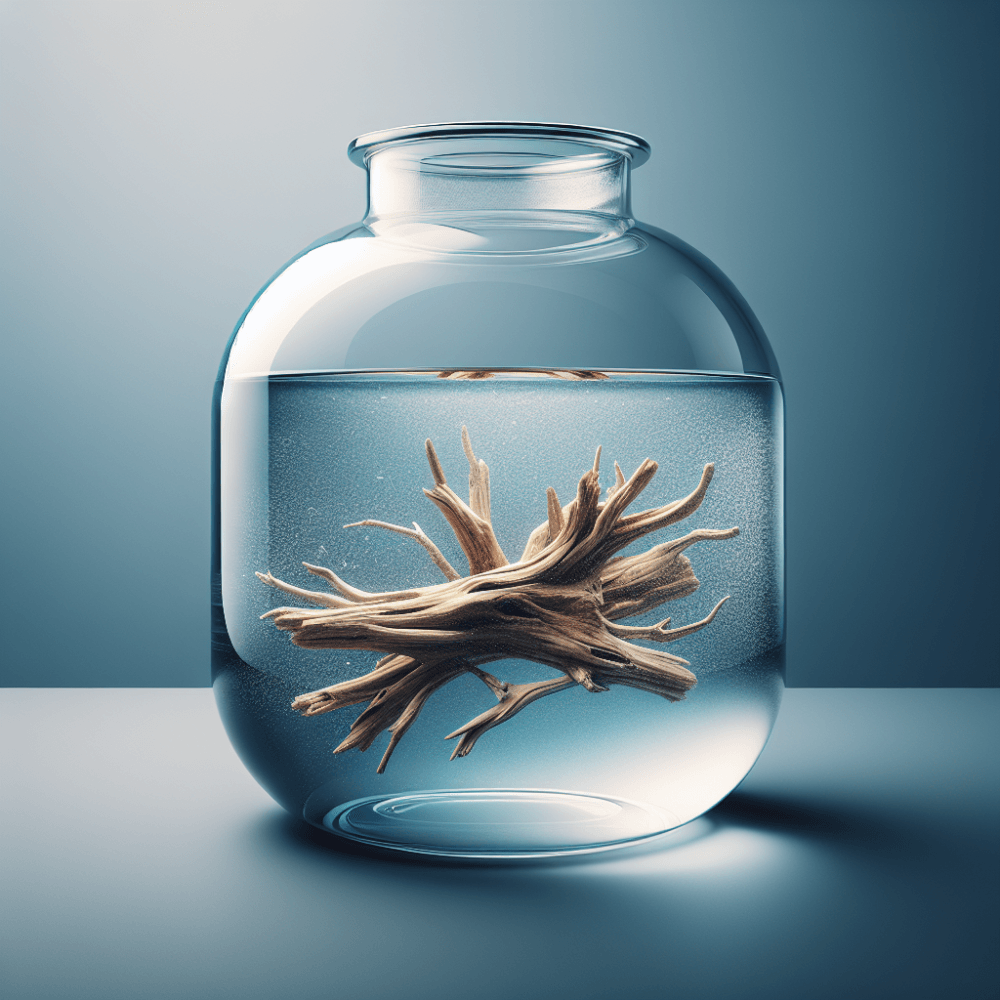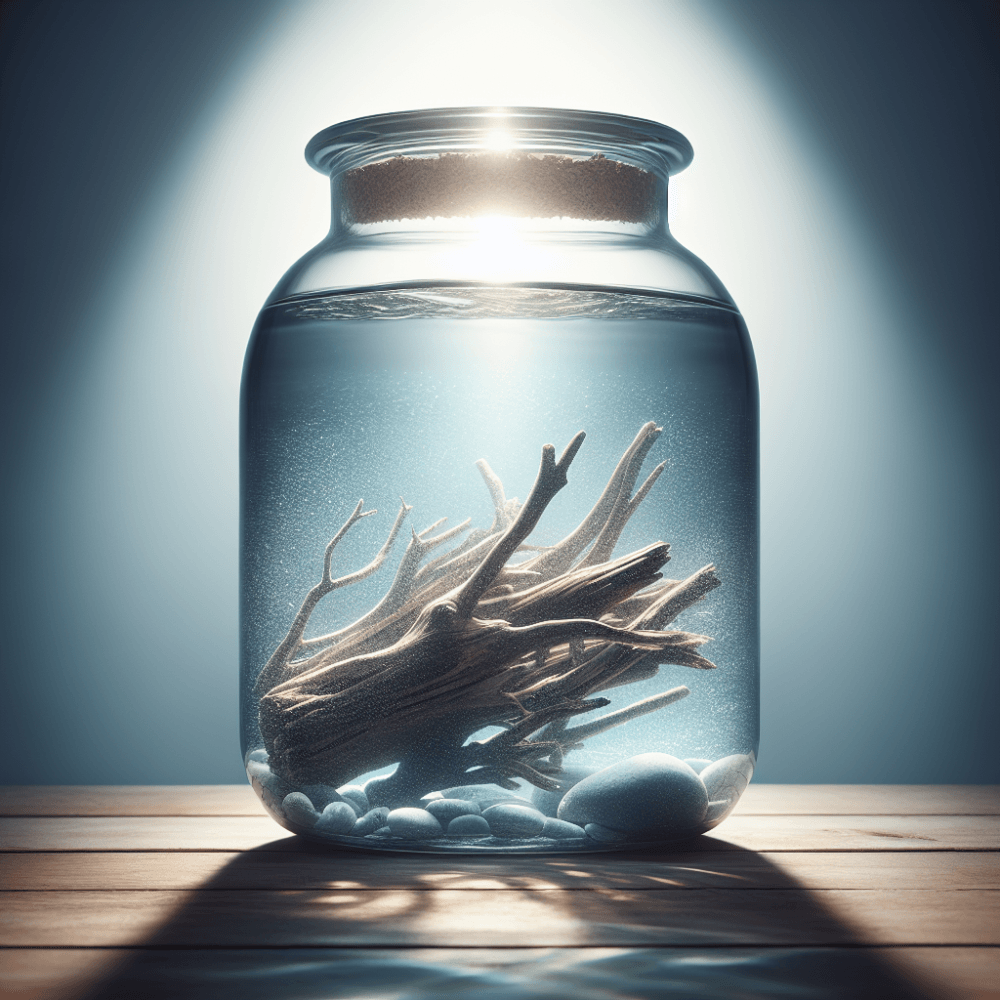Have you ever wondered if driftwood can make water cloudy? It’s a question that has crossed the minds of many nature enthusiasts and aquarium owners. In this article, we will explore the truth behind this common misconception and shed light on the fascinating relationship between driftwood and water clarity. So, grab a cup of coffee and join us on this journey to uncover whether driftwood is truly the culprit behind cloudy water.
The Effects of Driftwood on Water Clarity
Presence of Tannins
When introducing driftwood into your aquarium or bodies of water, one of the key factors that can impact water clarity is the presence of tannins. Tannins are natural compounds found in various plant tissues, including driftwood. These compounds are responsible for giving water a brownish hue and can have several effects on the overall clarity of the water.
Impact on pH Levels
Another important aspect to consider when assessing the effects of driftwood on water clarity is its impact on pH levels. pH levels play a crucial role in maintaining a healthy aquatic environment. Driftwood, especially when it is new or releasing tannins, can lower the pH of the water. This change in pH also contributes to the overall clarity of the water.
Introduction of Sediments
Driftwood can also introduce sediments into the water. As the wood naturally breaks down over time, it releases small particles and debris into the surrounding water. These sediments can have a significant impact on the clarity of the water, leading to a cloudy appearance.
The Role of Tannins in Water Clarity
What are Tannins?
Tannins are a group of organic compounds that are commonly found in plants, especially those with woody tissues. These compounds are responsible for the brownish or yellowish color often seen in bodies of water where driftwood is present. Tannins have various functions in plants, including protection against pests and UV radiation.
Tannins from Driftwood
Driftwood, being a natural plant material, contains tannins within its structure. When placed in water, these tannins are released over time. The amount of tannins released depends on factors such as the type and age of the driftwood. The presence of tannins gives the water a natural appearance but can also affect its clarity.
Tannin Concentration and Water Clarity
The concentration of tannins in the water can directly impact its clarity. A higher concentration of tannins will result in a darker and more opaque water appearance. On the other hand, a lower concentration of tannins will lead to clearer water. The individual preference for water clarity will dictate the ideal tannin concentration in an aquarium or body of water.

pH Levels and Water Clarity
The Importance of pH Levels in Water
pH levels play a crucial role in the overall health and well-being of aquatic organisms. Different organisms have specific pH requirements for their survival and optimal growth. Driftwood can have a significant impact on the pH levels of the water it is placed in.
Altering pH Levels with Driftwood
Driftwood, especially when it is new or releasing tannins, can lower the pH of the water. The tannic acid released from the wood can create an acidic environment. This change in pH can affect the water clarity and the overall stability of the ecosystem. It is essential to monitor the pH levels to ensure they are within the acceptable range for the inhabitants of the aquarium or body of water.
Possible Effects on Water Clarity
The alteration of pH levels due to the presence of driftwood can indirectly affect water clarity. Drastic changes in pH can disrupt the balance of the ecosystem and potentially lead to the growth of undesirable organisms, such as algae. These organisms can contribute to the cloudiness of the water and reduce its overall clarity.
Sediments and Water Clarity
Types of Sediments Associated with Driftwood
Driftwood, as a natural material, can release various types of sediments into the water. These sediments can include small particles, debris, and organic matter from the wood itself. Over time, these sediments settle in the water column, affecting its clarity.
Settling of Sediments
When introduced, driftwood can release sediments that float in the water. However, as time passes, these sediments will begin to settle towards the bottom of the aquarium or body of water. The settling process can contribute to the cloudiness of the water, especially if the sediments are fine and easily suspended in the water.
Water Clarity Implications
The presence of sediments released by driftwood can have a significant impact on water clarity. As the sediments settle, they can accumulate on the substrate and other surfaces, creating a murky appearance. Proper maintenance, such as regular substrate cleaning and water changes, can help mitigate the impact of these sediments on water clarity.

Factors Affecting the Cloudiness
Type and Age of Driftwood
Different types of driftwood may release varying amounts of tannins and sediments into the water. Hardwoods, for example, tend to release fewer tannins compared to softwoods. The age of the driftwood can also play a role, as older driftwood may have already released a significant portion of its compounds. Understanding the characteristics of the driftwood being used is essential in determining its potential impact on water clarity.
Water Flow and Circulation
The flow and circulation of water in the aquarium or body of water can influence the dispersal of tannins and sediments. Adequate water movement and filtration systems can help minimize the accumulation of these compounds and maintain water clarity. It is important to consider the specific needs of the organisms present and strike a balance between water movement and their comfort.
Presence of Other Substances
The presence of other substances in the water, such as dissolved minerals, can interact with the compounds released by driftwood and further affect water clarity. It is crucial to consider the overall water chemistry and potential interactions when introducing driftwood into an aquatic environment.
Measuring and Assessing Water Clarity
Turbidity Measurements
Turbidity is a common method used to measure water clarity. It assesses the presence of suspended particles, sediments, and other substances that can affect the clarity of the water. Turbidity can be measured using specialized equipment, such as turbidity meters, or through visual observations.
Observational Assessment
Observational assessment is another way to evaluate water clarity. By visually inspecting the water, you can note the presence of sediments, cloudiness, and any other factors that may contribute to reduced clarity. Regular and consistent observations allow for better understanding and timely intervention if necessary.
Water Clarity Standards
Water clarity standards vary depending on the specific requirements of the aquatic organisms. Some organisms, such as fish, prefer clearer water, while others, like certain species of plants, thrive in more tannin-rich environments. Understanding the needs and preferences of the inhabitants will help determine the appropriate water clarity standards.
Mitigating the Cloudiness
Preventive Measures
Taking preventive measures can help mitigate the cloudiness caused by driftwood. Pre-soaking the driftwood before its introduction can help remove some of the tannins and sediments, reducing their impact on water clarity. Additionally, choosing driftwood with low tannin release and implementing proper filtration systems can prevent excessive cloudiness.
Using Activated Carbon or Chemical Filtration
Activated carbon and chemical filtration can be used to absorb and remove tannins and sediments from the water. These filtration methods can help improve water clarity by removing the compounds that contribute to cloudiness. It is important to monitor the efficiency of the filtration systems and replace or recharge the media as necessary.
Regular Water Changes
Regular water changes are essential in maintaining water clarity. By replacing a portion of the water, you dilute the concentration of tannins and sediments, leading to clearer water. Additionally, water changes contribute to overall water quality and provide a fresh environment for aquatic life to thrive.
Considering Aquatic Life
Impact on Plants and Algae
Driftwood can have both positive and negative effects on plants and algae. Some plant species benefit from the release of tannins and can grow better in a more natural environment. However, excessive tannins can inhibit the growth of certain plant species, leading to reduced plant diversity. Algae, on the other hand, can thrive in the presence of tannins and sediments, potentially resulting in an unwanted increase in their growth.
Effect on Fish and Invertebrates
The impact of driftwood on fish and invertebrates can vary depending on the species. Some fish and invertebrates, such as certain species of catfish and shrimp, naturally inhabit tannin-rich environments and may benefit from the presence of driftwood. However, sensitive species may experience stress or discomfort due to alterations in pH levels or excessive cloudiness. It is important to consider the specific requirements and preferences of the inhabitants when introducing driftwood.
Balancing Aesthetics and Livelihood
Finding the right balance between aesthetics and the well-being of aquatic organisms is crucial when incorporating driftwood into your aquarium or body of water. While driftwood can add a natural and visually appealing element to the environment, it is essential to ensure that the water conditions are suitable for the inhabitants. Striking a balance between aesthetic preferences and providing a healthy livelihood for the aquatic organisms will lead to a satisfying and sustainable aquatic environment.
The Personal Choice
Factors to Consider
When deciding whether or not to include driftwood in your aquarium or body of water, there are several factors to consider. These include the specific needs and preferences of the aquatic organisms, the desired water clarity, and the overall aesthetic appeal. Understanding the potential effects of driftwood on water clarity and the ripple effect it may have on the ecosystem will help in making an informed decision.
Individual Preferences and Tolerance
Individual preferences and tolerances for water clarity vary among aquarists and body of water enthusiasts. Some may prefer a crystal-clear water appearance, while others may appreciate the natural look and benefits that driftwood brings. Assessing your personal preference and tolerance for the potential impact on water clarity will guide you in achieving the desired balance.
Striking a Balance
Ultimately, striking a balance between the effects of driftwood on water clarity and the well-being of the aquatic organisms is crucial. Regular monitoring and maintenance, along with the use of preventive measures and appropriate filtration methods, will assist in achieving this delicate balance. By considering the needs and preferences of both the environment and the inhabitants, you can create a harmonious and visually appealing aquatic setting.